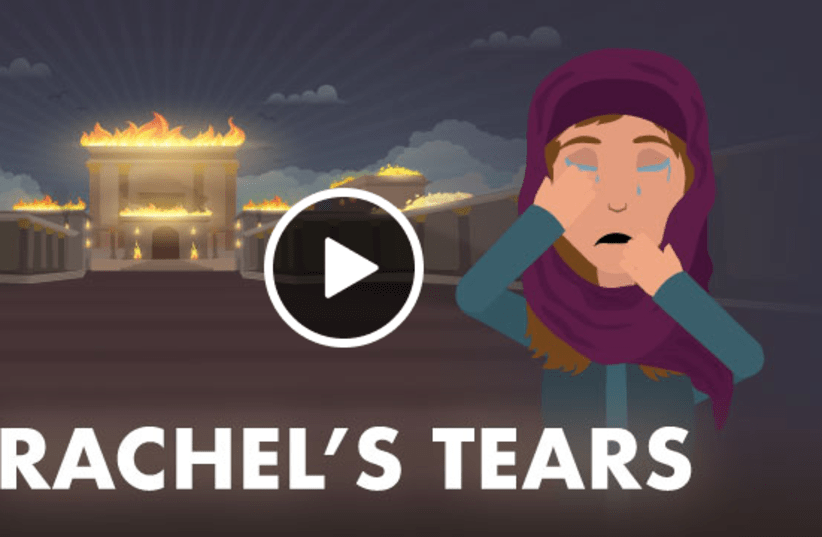What if our mourning is somehow meant to help us repair what’s been lost? What if grief over the past could actually lead us a bit closer toward a better future? This question is bigger than Tisha B’Av. It’s about how we approach our conflicts and disappointments any day of the year.
It turns out that there is actually a Biblical model for this kind of redemptive process; a figure whose mournful crying drew a response from none other than God, and a Divine promise to put an end to Israel’s long and bitter exile. That figure is our matriarch Rachel, and the promise from God is described in these words from Jeremiah:
There is a voice heard on high - a wailing, bitter weeping. Rachel is crying for her children… for they are gone. Thus said Hashem, hold back your voice from weeping, dry your eyes from tears, for there is reward for what you have done... there is hope for you in the end… your children shall return to their rightful borders (Jeremiah 31:15-17).
Jeremiah is the same prophet who witnessed the destruction of the First Temple and penned Megillat Eicha. If there’s one person who can express the pain and longing that we experience on Tisha B’Av, it’s him. In these words, Jeremiah describes Rachel as the embodiment of this pain, as she witnesses the children of Israel being forced out of their land by the Babylonian armies. It’s a dramatic, passionate portrayal of Rachel’s undying love for us - her children - and God’s ultimate promise of reward, return and redemption.
But there’s something strange about the promise God makes to Rachel. God tells her: “There is reward for what you have done.” It sounds as if Rachel has done some remarkable act that has merited this promise from God. But what, exactly, has Rachel done? She is crying, she cannot be consoled. Is that really an action? If anything, it seems like more of a re-action, an unanticipated outpouring of raw emotion. Why is God treating Rachel’s weeping as an act deserving of such a great reward? How is it that Rachel’s tears evoke such a powerful response from God?
Rabbi David Fohrman grapples with these very questions in Aleph Beta’s Tisha B’Av video - “The Power of Rachel’s Tears.” In this hour-long journey, Rabbi Fohrman takes a deep look into the life and story of Rachel to search for her great merit and the heroic moment that Jeremiah is speaking of. This search leads us into the heart of Rachel’s tense relationship with her sister Leah, one that is fraught with jealousy and hurt. For years, Rachel mourns her own barrenness, while she witnesses her sister give birth to child after child. At the same time, Leah is going through her own struggles, as she continues to experience herself as the unwanted wife in comparison to Rachel.
Through a close reading of the Biblical story, Rabbi Fohrman discovers a moment when the tides shift. It’s an often overlooked moment, a seemingly banal exchange; but in this moment, Rachel emerges from her sorrow to initiate an act of radical empathy. This poignant exchange between the sisters allows them to develop a deep understanding of one another, and ultimately sets the course for God’s promise of redemption generations later.
This is the moment that Jeremiah was referring to. This is the action of Rachel’s tears, and the merit that brings her children home. It rests on her ability to see beyond her own pain to recognize and hear the pain of her sister, and to choose to heal their relationship from years of misunderstanding and resentment. This act of Rachel becomes the model for reparative action, for turning grief into healing, and it is a model for how our tears on Tisha B’Av can become a catalyst for action.
If you want to look deeper into this moment, to discover how Rachel found within herself the power to transform her grief, and to understand what steps you, too, can take to direct your sorrow towards greater healing and reconciliation, watch this video and let it enter your heart.To view Rachel’s Tears, visit alephbeta.org. Ami Silver is a writer, research scholar and content creator at Aleph Beta. He is a Rabbi and Psychotherapist living, working and writing from Jerusalem.In cooperation with Alephbeta

